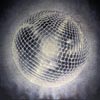
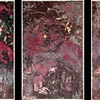
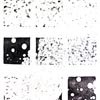

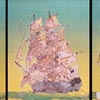
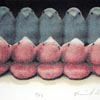
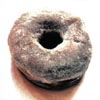
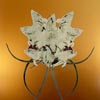
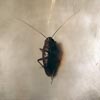
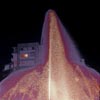
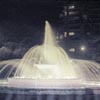
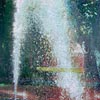
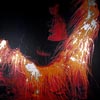
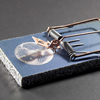
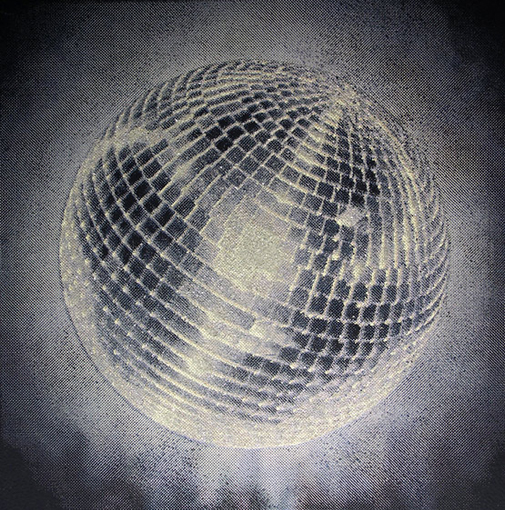
Printmakers tend to be inventors, always tinkering with techniques. I think of my studio as a laboratory and design my art projects like experiments. My experiments for Sugar Rats Disco investigate the border between representation and the physical presence of objects. An assemblage is created when wet screen-printed ink is dusted with a powdery material. This flocking technique creates bas relief-prints.
Andy Warhol questioned the taste of high/low culture. I appreciate his innovative, anti-art, use of aluminum foil, silver Mylar and “diamond dust.” These sparkling eye-candy prints were inspired by the glitzy kitsch of urban taste (nocturnal fountains, sugar donuts, Waikiki, Warhol).
Some prints were produced in collaboration with urban wildlife. Rats manipulate these images as they devour/deconstruct some of the printed layers (like helper elves who visit in the night). This interaction with repulsive rodents continues a favorite theme of transfiguration, or the elevation of everyday nuisance to the sanctity of high art.
I was recently asked to change the title/description I submitted to make the labels of a recent exhibit. The precise language of science is poetic. Frank art/language describes empirical reality while also generating an emotional response. That’s why it is important to describe The Trojan Horse as a screen-print flocked with rat poison. “2[P-CHLOROPHENYL) PHENYLACTYL]-1,3-INDANDIONE” does not have the same emotional response as “poison.” Substituting “bone dust” for “cremains of Maile” denies the inclusion of a literal essence of the dead dog Maile. Marcel Duchamp was asked to rename his painting “Nude descending a Staircase #2.” Duchamp believed a compromise in language would undermine the concepts of his art. He refused to change the title and took his painting home. I choose to exhibit my work with the censored text. I hope the work can speak for itself.